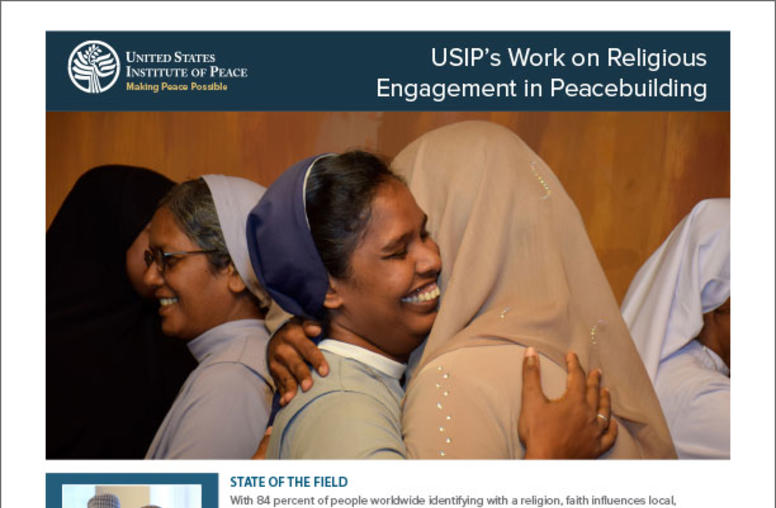Correlates of Public Support for Terrorism in the Muslim World
This report was commissioned by USIP's Center for Conflict Analysis and Prevention. Consistent with the center’s commitment to conflict prevention, this report aims to inform the center’s ongoing work to expand the understanding of the determinants of terrorism and its support base.
Correlates of Public Support for Terrorism
in the Muslim World
ETHAN BUENO DE MESQUITA
Washington University in St. Louis
This report examines the correlates of individual-level support for terrorism in fourteen Muslim countries. I identify a variety of factors that are correlated with support for terrorism. These factors can be divided into a several categories: attitudes toward Islam, attitudes toward the United States, attitudes toward politics and economics in the home countries, and demographic factors.
The analysis uses individual-level data collected by the Pew Research Center in their survey, What the World Thinks 2002: How Global Publics View Their Lives, Their Countries, The World, America. These data are augmented with national-level data on the economy, the size of the Muslim population, governance, and the level of terrorism.
I find that support for terrorism is positively (though weakly) correlated with anti-Americanism, the belief that Islam should play a significant role in politics, the belief that the United States poses a threat to Islam, and, surprisingly, the perception of free expression. Moreover, education, perceived state of the economy, and support for democracy are not found to have any significant relationship to support for terrorism in the survey.
The report proceeds as follows. First, I briefly discuss why understanding support for terrorism is important for understanding the politics of terrorism and counterterrorism. Second, I present some simple summary statistics of the Pew data set as it relates to the analysis in this report. Third, I analyze the individual-level data more rigorously, using an ordered logit model. Fourth, I offer interpretations of the results and discuss the problem of making strong inferences regarding causal relationships from this study.



